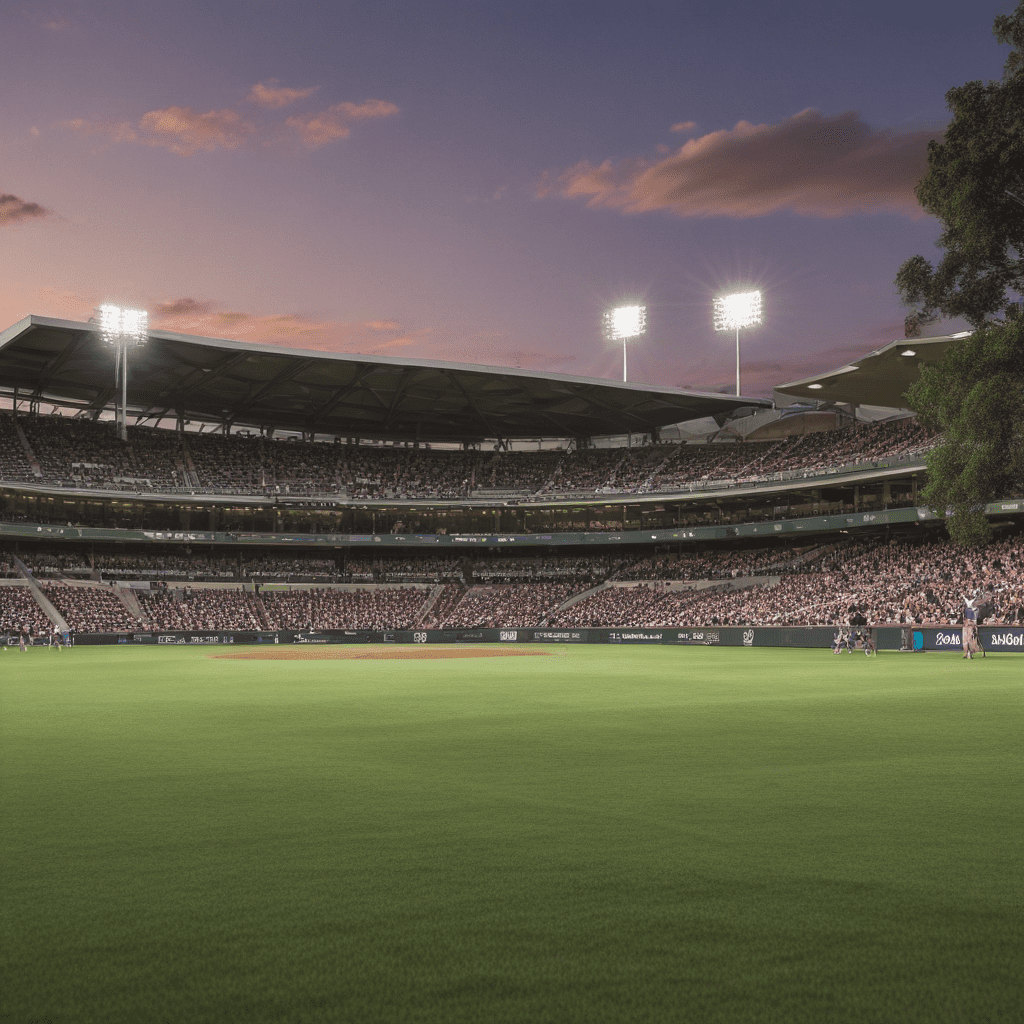Discovering the History of the Adelaide Oval
The Adelaide Oval, a legendary sporting and cultural landmark in South Australia, holds a rich and storied past. Its journey spans over a century, bearing witness to countless iconic sporting moments and playing a significant role in the sporting and cultural fabric of Adelaide.
Origins and Early Development
The Adelaide Oval's origins trace back to 1871 when a group of visionary cricket enthusiasts established the Adelaide Oval Company. The company purchased a 10-acre plot of land in the Park Lands, a pristine green belt surrounding the city. The oval was officially inaugurated in 1874, hosting its first cricket match between South Australia and Victoria.
Hosting Major Sporting Events
From its inception, the Adelaide Oval became a hub for major sporting events. It hosted its first Test match in 1884, welcoming the touring English team. The oval has since witnessed countless historic cricket matches, including the legendary 1932-33 Bodyline series. In addition to cricket, the Adelaide Oval has hosted other sports, including Australian football, rugby, and soccer.
World War I and Post-War Reconstruction
The outbreak of World War I in 1914 saw the Adelaide Oval temporarily transformed into a military training ground. After the war, the oval underwent extensive renovations to restore it to its pre-war glory. These renovations included the construction of new grandstands and the installation of floodlights, paving the way for night matches.
The Golden Age of Cricket
The post-war period marked a golden age for cricket at the Adelaide Oval. The oval hosted the first Sheffield Shield final in 1892 and has since become the traditional home of the South Australian cricket team. Legendary cricketers like Sir Donald Bradman, Keith Miller, and Shane Warne have graced the Adelaide Oval pitch, creating unforgettable cricketing moments.
The Adelaide Oval Cricket Ground
In 1993, the Adelaide Oval Cricket Ground was officially recognized as a National Heritage Site. It remains one of the most iconic cricket grounds in the world, renowned for its picturesque setting amidst parklands and its passionate cricketing fans. The ground has undergone significant redevelopments over the years, including the addition of the Western Stand in 2014 and the Hill Stand in 1927.
Australian Football Dominance
Australian football has also been a major part of the Adelaide Oval's history. The oval has been the primary home ground for the Adelaide Crows since their inception in 1991. The Crows have enjoyed great success at the Adelaide Oval, winning two AFL premierships in 1997 and 1998. The oval's atmosphere during AFL matches is electric, with passionate fans creating a vibrant sporting experience.
Wartime Legacy and Redevelopment
During World War II, the Adelaide Oval was again used as a military training ground. After the war, the oval underwent further redevelopment, including the installation of new seating and the construction of the Sir Edwin Smith Stand in 1950. In 1963, the old grandstand was demolished to make way for the contemporary Sir Donald Bradman Stand, a symbol of the oval's continued modernization.
Modernization and Transformation
In the modern era, the Adelaide Oval has undergone several major renovations and upgrades. The oval was redeveloped extensively for the 2015 Cricket World Cup, including the addition of a new Southern Stand. The oval now boasts state-of-the-art facilities and amenities, making it one of the most advanced sporting venues in Australia.
Sports and Cultural Significance
Beyond its sporting significance, the Adelaide Oval has become an integral part of Adelaide's cultural landscape. It is a popular venue for concerts, festivals, and other community events. The oval has hosted internationally renowned artists like Ed Sheeran, Taylor Swift, and the Rolling Stones, further solidifying its status as a hub for entertainment and cultural celebration.
Preservation and Heritage Status
The Adelaide Oval is highly valued for its historical and architectural heritage. It has been listed on the South Australian Heritage Register and the National Heritage List, recognizing its national significance. Efforts have been made to preserve the oval's original features while incorporating modern upgrades, ensuring its legacy for generations to come.
FAQ
1. When was the Adelaide Oval first established?
The Adelaide Oval was first established in 1871.
2. What major sporting events has the Adelaide Oval hosted?
The Adelaide Oval has hosted Test cricket matches, Sheffield Shield finals, AFL matches, and the Cricket World Cup.
3. Why is the Adelaide Oval considered a National Heritage Site?
The Adelaide Oval is considered a National Heritage Site due to its historical and architectural significance as an iconic sporting venue in Australia.
4. What is the capacity of the Adelaide Oval?
The capacity of the Adelaide Oval is approximately 53,583.
5. What other events are held at the Adelaide Oval?
In addition to sporting events, the Adelaide Oval also hosts concerts, festivals, and other community events.

